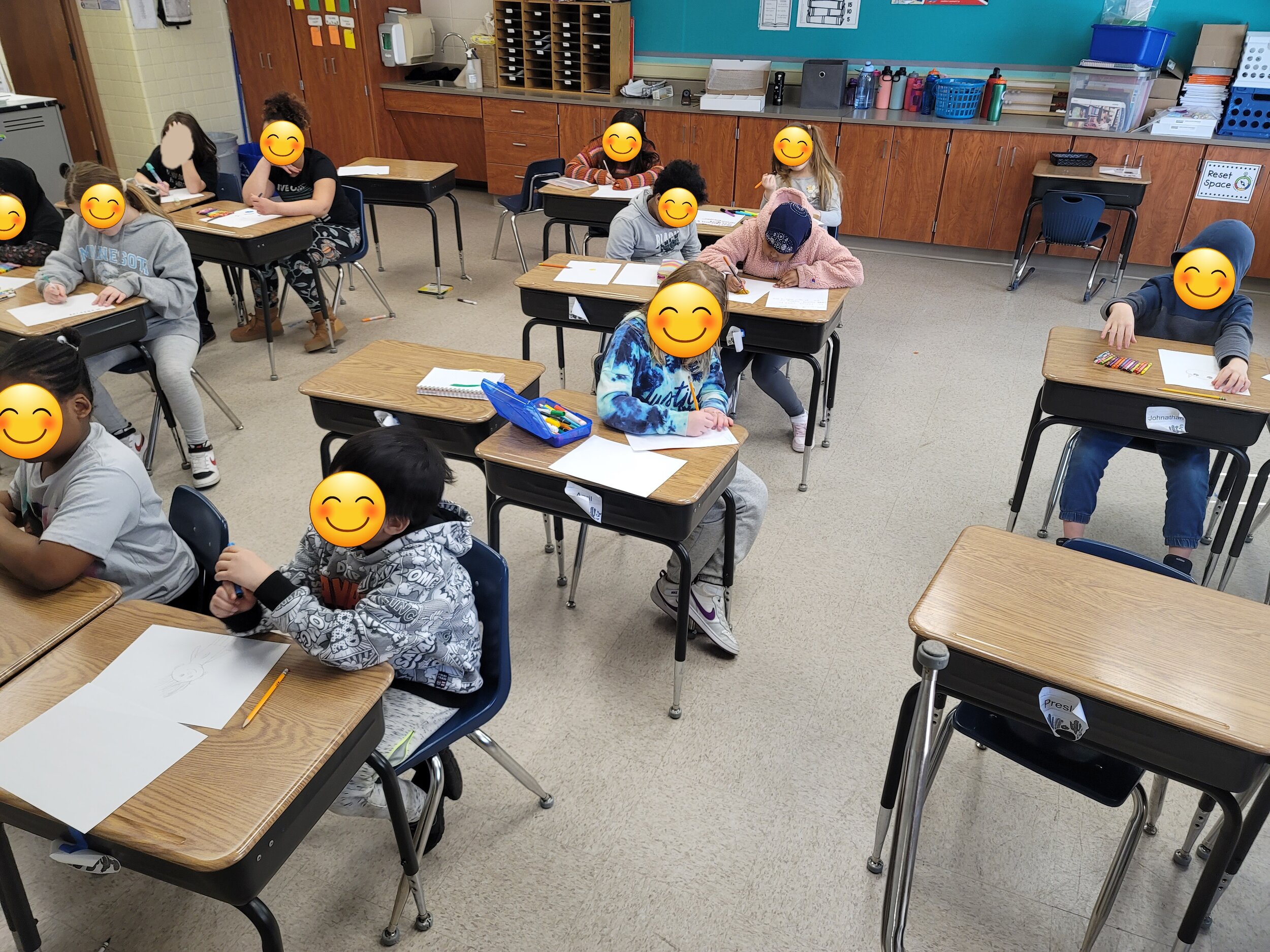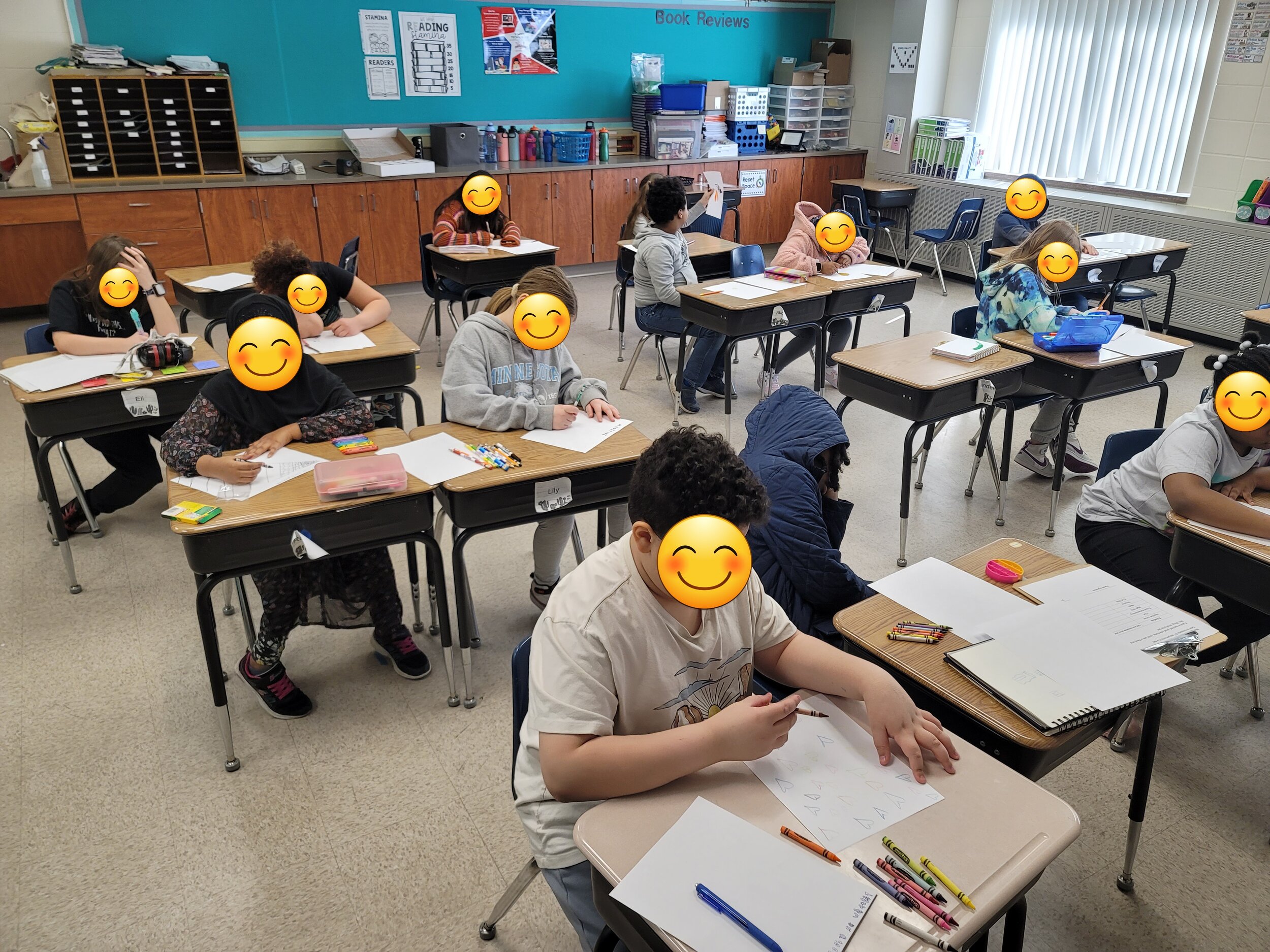Use case at a glance
Teacher: Ms. Krier, School Counselor
Location: Denver, CO
Grade Levels: 3rd through 8th
Timeline: 3 months
When I first connected with Ms. Krier, she told me that getting her students to do anything all year had been a struggle. As an experienced School Counselor, she had recently moved from Austin, TX to Denver, CO to work at a campus that serves 3rd through 8th grade students. “My students have precarious lives outside of school. They live in low socioeconomic environments, and the adults in their lives aren’t reliable - many are in and out of halfway homes, or prisons. These experiences have taught my students that adults can’t be trusted.”
Ms. Krier liked how the Color Mending process is self-led and was hopeful that her students could use coloring as a way to work through their emotions on their own. Her plan was to use Color Mending primarily in whole group settings.
The first time she used Color Mending with her class she used a step-by-step video Chelsea created to introduce coloring to her students. “My students were really into coloring. It seemed super helpful for them. We didn’t take enough time for them to analyze their own picture, and they still seemed to have individual takeaways.”
Throughout the three months, Ms. Krier began to notice that even if they didn’t have enough time to analyze each of their pictures, Color Mending was helping her students work emotions out. And, she began using Color Mending when she met with students one on one.
“One of my students had been refusing to talk to me when I met with her one one-on-one. There were clear signs that she had a lot of pain to process, so I asked her if she’d be open to a coloring activity, and told her she didn’t have to talk to me about anything. She easily agreed, which surprised me. When she was coloring, she was taking it very seriously. After she was done coloring, I showed her how to use the Color and Common Shapes Charts and let her lead herself through the interpretation. She wrote a lot. At the end, she told me she really liked it. It feels great for me to have a tool to use with her.”
A few days later this same student stopped by Ms. Krier’s office and opened up to her. “She just started to talk about everything. I attribute her being willing to talk to Color Mending. It helped her see that I have tools to help her work through the pain, that I’m here to support and teach her how to work through the pain, and helped build trust between her and I.”
As Ms. Krier continued to use Color Mending in whole group, her students began to be more curious about what each of the shapes and colors represented, a sign that they were enjoying the coloring process. “It’s been an effective tool to help each student build trust within themselves and trust with me. While some students are not interested in coloring, the majority are. And, those that do enjoy it take it seriously and want to learn more.”


